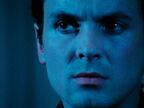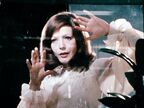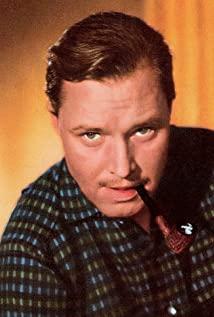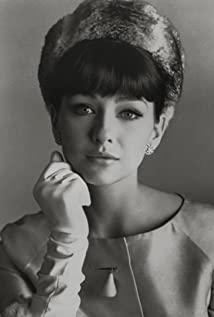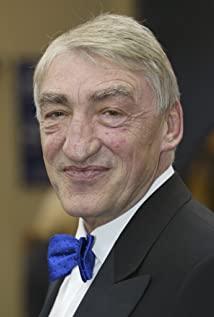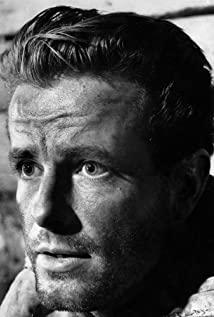[During the World] is Fassbender’s only science fiction work. Together with Godard’s [Alpha City] and Tarkovsky’s [Flying to Space], these three directors are all using science fiction The shell wraps its own story. Tarkovsky’s high degree of introspection can only use science fiction as a calling medium for memories, religion and emotions. Godard uses the formula of E=MC^2 and the sadistic separation of sound and pictures to tell a love story. Fassbinder, through the internalization of the film's story and form, created a strict "rules of the world", and tried to find an exit for his premeditated escape goal.
The film is adapted from the long science fiction novel "Triple Simulation" published by Galois in 1964. The famous science fiction film series "The Matrix" in the 21st century is obviously inspired by the concept of "multiple reality" in this novel. Compared with "The Matrix", which combines the exciting slow-motion dodging shots with the subtle science fiction philosophy and the rhythm, the 1973 "Between Days and Nights" has neither CG special effects, car chases and gun battles, but also There is no cyberpunk-like heroic hero. The story of more than 200 minutes (the film is a 16mm film produced by Fassbinder for West German TV, divided into two parts) is mostly just the hero's drinking, talking, and crazy actions . However, once you adapt to Fassbinder's leisurely and unique 70s atypical sci-fi style, it is easy for us to understand the rhythm of the entire narrative. Without steampunk and tall buildings, the visual metaphors of reality and illusion in the sci-fi world are only interpreted by the ubiquitous mirror. The research institute where the supercomputer was stored was filled with completely mirrored walls. In the final showdown between Eva and Stiller, a three-sided mirror corresponding to the three-layer reality metaphor even appeared symbolically. The camera often performs an unspoken autonomous movement. Often the character does not move, but the camera has performed 360-degree surround shooting or panning of the character. This unusual scene scheduling is a consistent feature of Fassbinder, except The consideration of dramatic stage effects is even more the formalization of Fassbinder's film values. The difficulties and obstacles of real individuals are often escaped through the movement of unknown subjective camera lenses. In addition, Fassbinder actually did not completely assemble a set of independent sci-fi movie genres. Many small details in the film echoed some of the previous sci-fi works: When Stiller talked about computer control systems with reporters at a temporary press conference, The background music of the blue Danube is easily reminiscent of "2001: A Space Odyssey" in 1986. The stranger that Stiller encountered when he escaped was the protagonist Eddie Constantine of "Alpha City".
Fassbender’s filming of this science fiction film does not care about the creation of a vertigo future atmosphere, but wants to use the style of futuristic retroism to tell his expression of self-perception and escape: the future world through the creation of the name Smolekjon Supercomputer computing systems simulate and predict human behavior, thereby avoiding unreasonable social processes and understanding correct social needs and development. In the "simulated reality" created by the Smolekjon system, each "identity unit" thinks, lives, and is related to each other like a person, but compared to the higher "reality" represented by the actor Stiller, The "identity unit" is just a mechanical program of a complete causal chain. The stronger the centralized power, the more he will claim his absence and push the responsibility to the higher level of enforcement. In the end, Stiller discovered that there is a "real world" above the Smolekjon system that rules the world he is in. Run order.
The film did not concentrate the narrative energy on the protagonist's layer-by-layer separation of conspiracy theories, and formed a sense of completeness to unravel the truth. He spends a lot of space on the protagonist Stiller's exploration and reflection on the authenticity of the self. If under desire and at the beginning of consciousness are just blind media simulations, then the construction of "self" is just a by-product of simulated consciousness, and the subjectivity of the object collapses in an instant. As we all know, what Fassbinder’s works most eagerly emphasize is the exploration of perceptions and emotions. Love is colder than death, fear swallows souls, etc. The movie titles intuitively show his dependence on experience and cognition, cruel and self-conscious. Love, longing for love, and the complex emotions that mix instinct and personal experience are the proof of his existence in life. In [Daily and Evening of the World], the Smalley Keron system and the higher "real world" first deny the authenticity of the consciousness subject of the "identity unit". The suspenseful body cannot be the basis for authenticity. Being aware of the uncertainty of the body, it is easy for the story to fall into the void. However, Fassbender prefers to use the experience and emotion of the body to find out and escape for Stiller and himself, and plan to escape.
In the film, even though Stiller is more skeptical of the authenticity of the world he lives in, he has been using the perception of physical experience to seek real existence, and many of his unconsciously repeated small actions run through the film. He likes to turn around a few times when he sits down in the office chair, and when he asks his superiors, he even rotates the chair with his superiors. This uncontrollable behavior keeps appearing in every corner of the story. It does not promote the narrative function, but Stiller's personal salvation, Fassbender wanted to use an implicit unconscious action to try to escape this false and true simulation unit. When Stiller found out that Eva was a contact in the upper world, he bluntly said that he just wanted to end the nightmare, but at the same time borrowed cigarettes from Eva, knowing that he would be shot tomorrow morning, and accepted it. Eva's love invitation. After the Spring Festival, Eva, who represented the authenticity of the subject of consciousness, dissuaded Stiller from going to the research institute to die, but Stiller abandoned this upper-level real rescue, stood on the top of the car and gave generously, and went to death resolutely. The death here is The result of Stiller's premeditated escape is also Fassbender's imagination of premeditated escape. Stiller is not sure whether Eva's upper-level power can really drive the certainty and authenticity of his conscious subject. He would rather use his body's perception to achieve an unpredictable ending; Fassbender does the same in the real world. , Smoking, drinking and having sex. He constantly launches endless attacks on his body. He does not believe in the rational salvation of the conscious subject. His irrational beliefs make him confident that his body can withstand all kinds of torture and Abuse, he is a person who writes with his body, and his perception of physical experience is the most real basis for existence in his opinion. At the end of the film, a series of vertical clips are used to explain the ending of Stiller. Stiller who died in the second world has been led to the third real world by the upper-level monitors, but the death of the body has brought the last of the consciousness subject. Returning to the truth, this may be the best escape method, and secondly, it is also an allegory of Fassbinder's future ending. In the early morning of June 10, 1982, Fassbender was lying on the bed in his apartment with a cigarette in his mouth, already dead of anger. Fassbender knew that his overdose of drugs, sleeping pills and stimulants was equivalent to chronic suicide, but he continued to do so, probably this is the escape route he planned, but we don’t know like the movie that he will return in the end. In which reality to go.
View more about World on a Wire reviews




